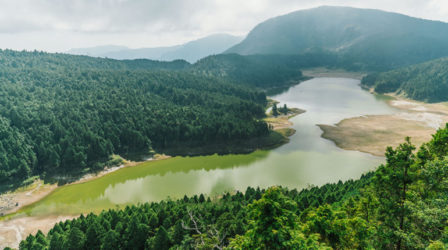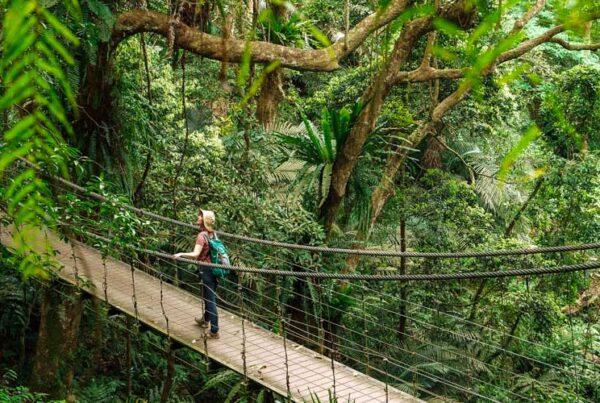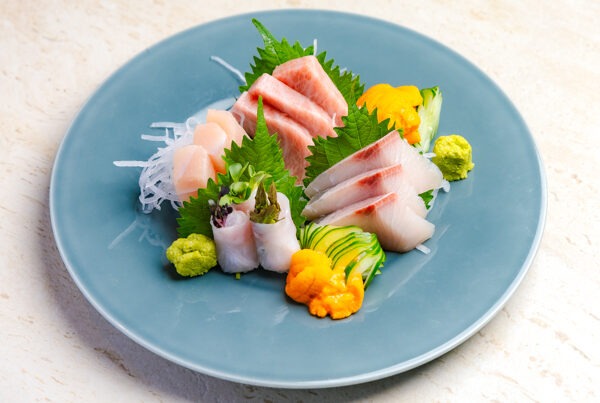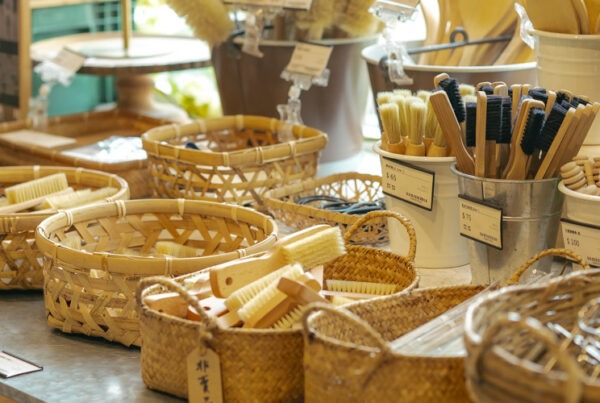Daxi: Tofu Town, History Hotspot

Daxi Old Street
Things to Do in One of Taoyuan’s Premier Tourist Areas
Text and Photos: Vision
Daxi literally means “Big River,” and there is indeed a waterway flowing through this district in Taoyuan City, the Dahan River. Whether it qualifies as “big” depends on the time of year; generally the water flow leaves most of the rocks and boulders strewn across the riverbed exposed, but this can change – and dramatically so – during typhoon season.

Old bridge over Dahan River at Daxi
Daxi District can be easily explored by bus from Zhongli Railway Station (Taiwan Tourist Shuttle Cihu Route; en.taiwantrip.com.tw). The wide variety of attractions, historic, scenic, and culinary, makes the area an excellent choice for a day trip from Taipei.
Shimen Reservoir
Before you reach central Daxi on a Taiwan Tourist Shuttle bus you’ll pass over a long bridge, to the right of which is a massive concrete structure. This is the Shimen Dam, at the head of the Shimen Reservoir, created to store the waters of the Dahan River. Get off at the parking lot beyond the bridge and walk up to the dam (about 15 min.) for great views of the reservoir (there is a small platform with a Chinese-style hilltop pavilion reached after crossing the dam, from where you can take in the reservoir and the lower-lying areas of Daxi District in the distance.

The dam of Shimen Reservoir

Shimen Reservoir
The construction of the reservoir took eight years, and was completed in 1964. More than 7,000 people worked on the project, which cost about US$100 million. The reservoir, 16.5 km in length, is used for irrigation, power generation, flood prevention, and drinking-water supply purposes, and is a popular tourist site as well. During seasons with heavy rainfall the gates of the dam are opened to release excess water, the powerful discharge creating a spectacular picture.
Daxi Old Street
From the reservoir it’s just a short bus ride to the next stop, Daxi Old Street. Head to the street and find out why it is such a tourist magnet. In days past Daxi was a thriving center of trade thanks to the Dahan River. This waterway connects to the Tamsui River at Taipei further north, which in turn connects to the sea, facilitating trade with the Taipei area and further on to mainland China (river transport was eventually abandoned due to silting).

Daxi Old Street

Intricate facade carvings

Daxi cat
During the Japanese colonial era (1895~1945), a passion developed among rich Daxi merchants for building shophouses sporting splendid façades along the main streets, especially today’s Heping and Zhongshan roads. Many of these are still in existence, some beautifully restored. They feature a mix of Western-inspired Baroque-style and traditional southern Fujianese architectural elements. While strolling through the Old Street area, take the time to look for and marvel at the intricate façade carvings, including birds and bats, along with the occasional shop name in English.
Tasty Tofu
After exploring the Daxi Old Street area, you might want to sit down for a snack or a proper lunch. Rest assured, there is no shortage of eateries in this town. The specialty here is dried tofu, or dried beancurd. Daxi tofu is darker than the tofu you find in other parts of Taiwan (in Chinese it’s called “black dried beancurd”), and it’s also firmer than your regular dried beancurd. The dried-tofu industry was started in Daxi in the 1920s when a man named Huang Wu gave tofu production a try. He refined his product over many years of experimentation, developing a unique way of preserving the tofu and making it more fragrant (“five-flavors beancurd”). Today the Huang clan continues to produce its distinctive product, under the brand name Hwang Dah Mu. Visit the shop of the same name at No. 39, Heping Road in Daxi.

Hwang Dah Mu shop

Dried bean curd
Cihu Mausoleum
Next, hop on the next Taiwan Tourist Shuttle bus and get off at the last stop, Cihu. This is the site of a park with more than 200 statues of Chiang Kai-shek (and 27 of Dr. Sun Yat-sen), gathered from around Taiwan, among them busts as well as full-sized statues of the Generalissimo sitting, standing, riding a horse, and so on.

Park with statues of Chiang Kai-shek
From the park it’s a walk of about 15 minutes to the Chiang Kai-shek mausoleum. Cihu – this place name refers to the enchanting local lake surrounded by lush mountains – was once the site of one of the president’s numerous residences, today used as the mausoleum. Inside, you can have a look at the black sarcophagus – a bow in respect is customary – and outside you’ll have the chance to witness the changing of the guard, staged at regular intervals during the day.

Changing of the guards at the mausoleum
Daxi Tea Factory
The Taiwan Tourist Shuttle’s Cihu Route ends at Cihu, but if you come on a weekend you can take a bus on the Xiaowulai Route further east along the Northern Cross-Island Highway. Before reaching Fuxing Township, home to the Little Wulai Scenic Area, the last stop of the shuttle service, get off at the Daxi Tea Factory bus stop. The Daxi Tea Factory (www.daxitea.com), established in 1926, was almost completely destroyed by fire in 1956. It was rebuilt after a decree was issued by Chiang Kai-shek, who had noticed the destruction when passing the site on his way to his residence at Jiaobanshan further to the east. Today, tea-lovers can visit this beautifully restored center of tea culture to learn about tea cultivation and the process of tea-making, visit the tea factory’s museum, sample-taste and buy all sorts of tea, and eat simple meals at the on-site restaurant.

Daxi Tea Factory

Tasting fine tea

Platform over Little Wulai Waterfall

Scenery at Jiaobanshan
Northern Cross-Island Highway + Taipingshan
taiwaneverything.cc/2016/10/27/northern-cross-island-highway-2/
[This article was originally published in Travel in Taiwan, a publication by the Taiwan Tourism Bureau. All rights reserved.]














